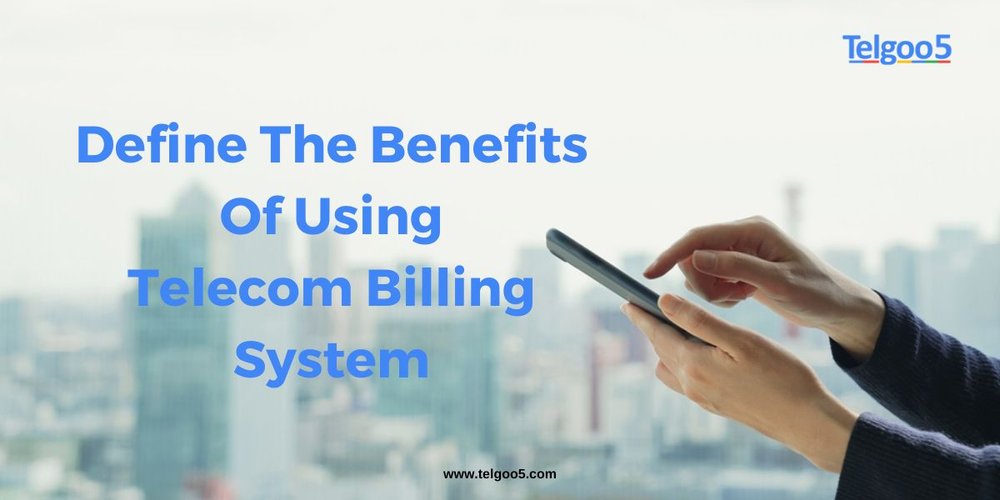
Define the benefits of using Telecom billing system
Understanding Telecom Billing: What You Pay For
Many consumers expect their communications service invoices to clearly show their current spending, services, and what they pay for. However, it’s essential to understand how Telecom billing systems truly function. Telecom bills primarily aim to explain how much you owe, not necessarily the intricate reasons why.
Demystifying the Telecom Billing System
Simply put, a Telecom billing system encompasses all the procedures, data, and regulations a service provider utilizes to calculate your outstanding balance. Each provider employs a unique formula to determine their rates, billing cycles, labeled fees, and branding costs. Consequently, understanding the billing system of one provider rarely translates to comprehending the systems of others.
So, let’s delve into what a Telecom billing system typically offers.
The Hidden Costs of Telecom Billing Ignorance
A lack of knowledge often leads to detrimental consequences in the business world. This holds particularly true when companies handle payments for telecom services. Telecom firms’ specific billing patterns and procedures can lead to significant and often unnecessary financial expenditures. Fortunately, businesses that invest in proactive telecom expense management and possess the tools to identify potential pitfalls can avoid most of these costs.
Key Features of an Effective Telecom Billing System
In today’s competitive landscape, providing customers with an efficient and reliable method for managing their telecom-related expenses is a significant advantage. A robust Telecom Bill Software should offer several key features:
Electronic Billing (E-bills) for Enhanced Convenience and Savings
A successful Telecom Bill Software should provide the option for electronic bills (E-bills). This feature allows subscribers to view their bills conveniently on digital devices such as smartphones, tablets, or laptops. Furthermore, telecom operators can realize substantial cost savings by utilizing this functionality instead of incurring printing expenses. These saved funds can then be strategically reinvested in other crucial business services.
Robust Data Record Validation for Accuracy
An effective telecom billing solution should be able to locate and eliminate duplicate entries within the system to ensure billing accuracy and prevent duplication. This process utilizes unique identifiers within the datasets to screen for and remove redundancies. This crucial screening procedure significantly reduces errors associated with duplicate billing of the same account.
Minimizing Errors in the Billing Process
The billing process within the telecommunications industry is inherently complex. Telecom service providers offer users various pricing schemes, including per-minute billing and charges based on the time of day. Billing errors can severely damage a telecom company’s reputation and lead to customer attrition as subscribers seek more reliable alternatives. A dependable Telecom billing system is paramount to guaranteeing business billing quality and accuracy.
Comprehensive and Detailed Billing Information for Transparency
Subscribers to telecom services are constantly seeking ways to reduce their expenditures. Providing customers with thorough and detailed information about their telecom consumption empowers them with the knowledge necessary to make informed decisions about their service usage. A complete billing report should include monthly details regarding a subscriber’s call duration, the time and date of calls, message analytics (received, sent, delivered), data charges, and more. Subscribers should have straightforward access to this comprehensive report through the company’s secure web portal using their unique login credentials.
Providing Management with Reliable and Actionable Data
An effective and efficient Telecom Bill software should meticulously track all telecom-related expenses. This includes consumption patterns, asset utilization, subscription rates, and other associated costs. The telecom management team can leverage this reliable data to make more informed and strategic decisions regarding the direction of the business’s growth and operational efficiency.
Simple Modification and Management of Pricing Schedules
The telecommunications sector is characterized by intense competition, which leads businesses to adjust their pricing policies and tariffs frequently. An efficient Telecom billing system should enable a telecom firm to easily deploy new pricing tariffs without disrupting ongoing billing operations. This agility in managing pricing is crucial for staying competitive.
Simplified Budgeting Processes for Cost Control
With a robust billing system, telecom service providers can manage their budgeting processes within their allocated financial limits. The system actively monitors client spending for the telecom business and provides timely notifications to management when specific budgetary benchmarks are surpassed. This proactive alerting system allows management to take prompt action to mitigate costs and ensure adherence to budget constraints.
Seeking Professional Assistance for Billing Optimization
While internal resources might be able to identify overlooked charges on your monthly telecom bills, engaging a professional Telecom Expense Management (TEM) firm, now often referred to as Technology Consultants, offers a more effective alternative. These experts specialize in uncovering hidden costs and overcharges, ultimately leading to significant savings and an improved bottom line. Furthermore, a professional TEM service provider can thoroughly analyze your existing telecom requirements and provide fresh, tailored suggestions to meet your specific needs, often substantially reducing your monthly telecom expenditures.
Contact us today to get a consultation!
Send us a message to get answers to any of your questions & we'll get back to you within 24-48 hours or as soon as possible.
